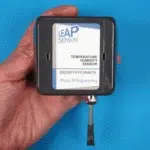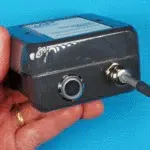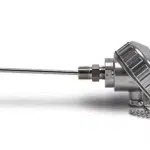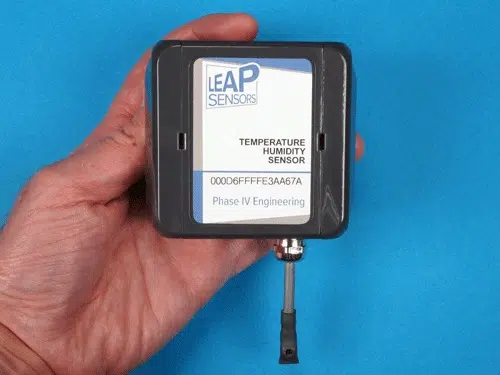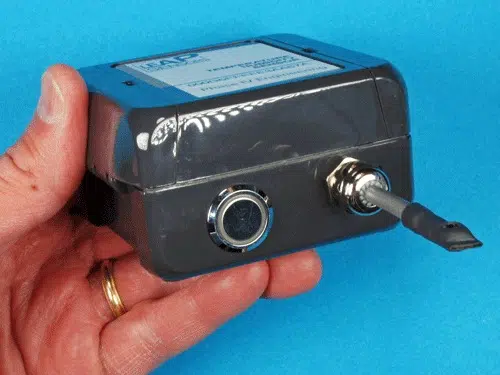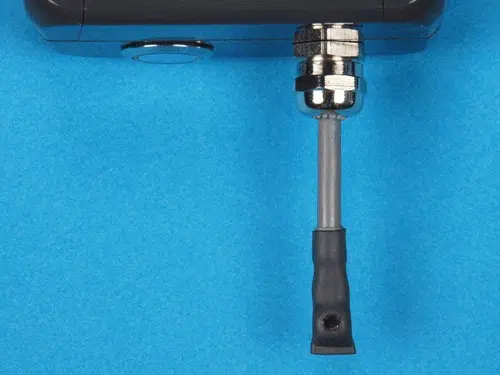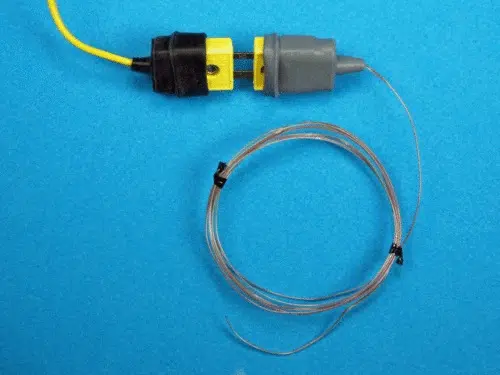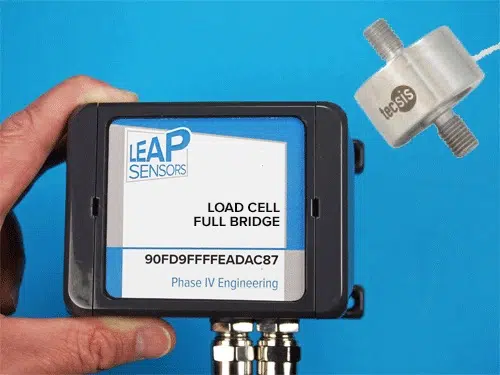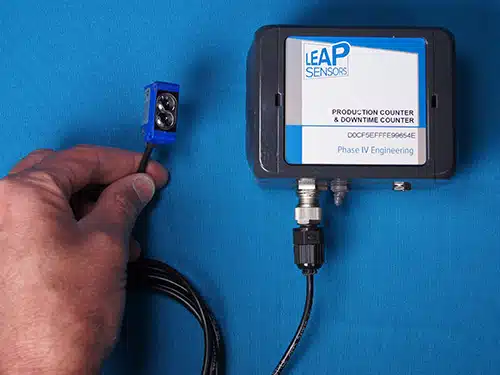Leap Sensors are specially designed to easily adapt to your specific needs. If this isn’t exactly what you need, please contact us.
Wireless Cellular Temperature Sensor Specifications
The cellular sensor transceiver node integrates with a wide variety of heavy-duty wireless temperature sensors, ideal for monitoring virtually any application. Each type operates on different principles and has varying characteristics. Below are some of the different options.
- Resistance Temperature Detector (RTD) sensors use a metal wire whose electrical resistance changes predictably with temperature. By measuring this change in resistance, the RTD can accurately determine the temperature of the material it is attached to.
- Known for their high accuracy and stability, RTDs are used for precise temperature monitoring in many applications, such as within motors to prevent overheating
- Thermocouple (TC) sensors convert thermal energy into a small electrical voltage, or electromotive force (EMF), to measure temperature. This voltage can be measured and correlated to a temperature reading.
- Specific voltage output depends on the types of metals used, which is why there are different thermocouple types (e.g., Type K, J, T) designed for specific temperature ranges and applications.
- TC sensors are not highly accurate and are typically used for monitoring applications rather than precision temperature measurements.
- Popular in many industrial applications due to their wide variety and wide temperature range.
- I2C digital temperature sensors work by a silicon die or thermistor sensing temperature changes and converting them into a digital signal, which is then communicated to a microcontroller using the I2C protocol.
- Often used for measuring temperature in refrigerators, freezers, and ambient air.
- I2C sensor probes can be calibrated separately from the main sensor node. As a result, I2C sensors are a great option for applications where regular calibrations are needed as just the probe can be replaced.
- Infrared (IR) temperature sensors work by detecting the infrared radiation emitted by an object, which is proportional to its temperature. A lens focuses this radiation onto a detector, often a thermopile, which converts the infrared energy into a heat signal that is then converted into an electrical signal. The sensor’s electronics process this electrical signal to display a temperature reading.
Temperature probes are available in various shapes and constructions, including straight probes for surfaces, penetration/needle probes for internal measurements, thermowell probes for measuring inside a container, hopper, or vessel, flexible or curved probes for hard-to-reach areas like pipes, and surface-mount or clamp-on styles for flat surfaces and exteriors. The shape is determined by the intended application, with different designs like air probes, roller probes, and those with specific fittings (ring terminal, hex bolt) also available. If you aren’t sure what shape of probe you need, just ask us and we’ll find the right solution.
This cellular temperature sensor is ideal for:
- Remote monitoring of plant nurseries & commercial greenhouses
- Remote monitoring of warehouses
- Remote monitoring of unused commercial space for frozen pipes
- Soil temperature monitoring
- Monitoring temperature in barns or silos to protect livestock and stored goods
- Tracking temperature in remote freezers, refrigerators or cold storage units
- Monitoring remote water treatment and pumping stations
Patents pending.
